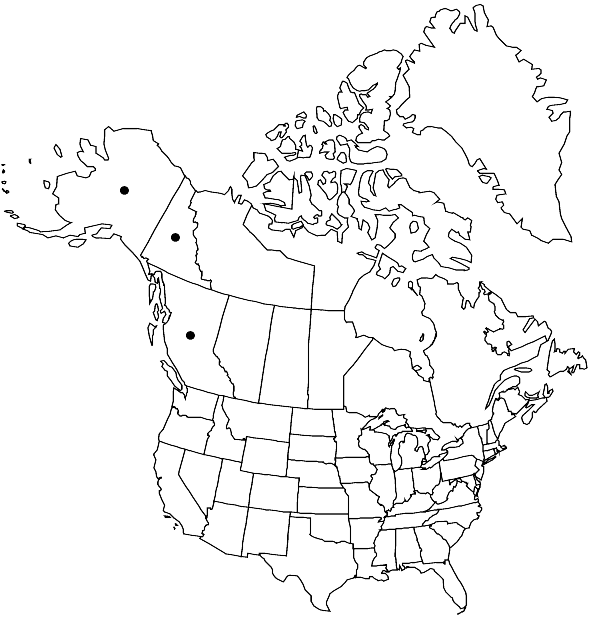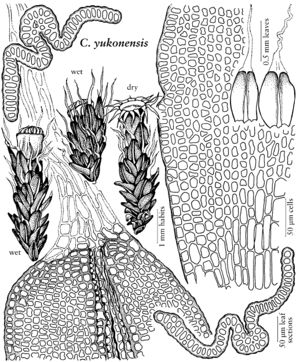Coscinodon yukonensis
Bryologist 102: 278, figs., 42–51, 53–54. 1999,.
Plants 7–10 mm, dark brown green. Leaves broadly ovate-lanceolate, 0.9-1.2 × 0.4 mm, margins plane, apex plane, awn 0.2–1 mm, lamina non-plicate; basal juxtacostal laminal cells rectangular to long-rectangular, 27–51 × 8–12 µm, thin- to thick-walled; basal marginal laminal cells oblate to quadrate, 5–12 × 9–12 µm, evenly thick-walled; medial laminal cells 1-stratose; distal laminal cells 1-stratose. Sexual condition dioicous. Seta 0.3–0.5 mm. Capsule immersed, cupulate; peristome present, scalloped, xerocastique.
Habitat: Siliceous or granite-slate outcrops
Elevation: moderate to high elevations (1500-1700 m)
Distribution

B.C., Yukon, Alaska.
Discussion
Coscinodon yukonensis is known only from northwestern North America. The specimens were all originally identified as C. cribrosus, which it resembles in its immersed capsules and superficially cribrose peristome teeth. However, C. yukonensis is separated by its xerocastique peristome (i.e., opens when dry) and non-plicate, plane margined, 1-stratose leaves. Additionally, unlike those of C. cribrosus, the peristome teeth are not perforated; rather, the ornamentation has been “scalloped out” down to the cell walls on either side of the teeth. Thus, while superficially appearing perforated, the cell walls are intact. Its leaves resemble those of C. calyptratus but are much smaller, more broadly ovate, and never revolute. Additionally, it has an immersed capsule and the peristome teeth are scalloped, not solid as in C. calyptratus. The basal marginal laminal cells are oblate to quadrate, unlike those of any other Coscinodon in North America.
Selected References
None.
